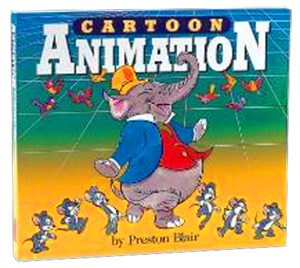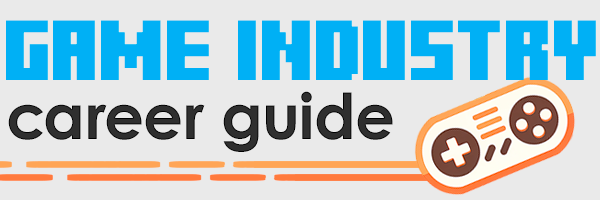How To Become A Video Game Character Animator

Meet Tony Ravo, Video Game Character Animator
Tony has been making video game characters come to life since 1996. From beloved kids’ games like Finding Nemo, to classics like Harry Potter and the Chamber of Secrets, to action-adventure hits like Assassin’s Creed and Marvel Super Hero Squad, Tony has animated dozens of characters and shipped over 20 titles throughout his enviable career in games. (He’s also credited as “voice talent” on The Sims 2, but that’s another story!)
We talk with Tony today about how he started his career, what he does each day at his job, and how you can start preparing for your own job as a Video Game Character Animator. His advice will inspire you.
What you do at your job as a Video Game Character Animator?
Being an animator is a cross between Dr. Frankenstein and an actor. We basically have to animate – which literally means “give life” to – static drawings or 3D character models. That’s the Dr. Frankenstein part. The actor part is not just moving them around, but giving them personality and purpose so the player cares about the character no matter how large they are on the screen.
As a Character Animator, my job is highly collaborative. Many different people contribute to developing a game character, so there are requirements your work needs to be a part of. Like in film, for any character an actor portrays there is a writer who conceived of their motivations and everything they say, and a director who helps guide the actor through the type of performance they envision for the film based on the script. My job is a lot like that – I work with game designers and art directors to make sure the character is fulfilling the needs of the game in terms of gameplay, and matching the tone and theme that the Art Director envisions for the project.
You’re also a Lead Animator?
Yes, and that part of my job involves much more than just creating the animations. I am the one that is in the meeting and working with the Art Director to help set a style, and working with designers to find out what they need. I also work with producers to create the scheduling and tasks for the animation team.
I am also responsible for making sure the animation quality bar is being hit, and that every animator is matching the style we’ve set. This usually involves running critique sessions and giving feedback on the work of the other animators.
How did you become a Character Animator?
It began in the days when we used pencil and paper to animate, and our “undo” button was a pink square called an eraser. I grew up loving Disney and Warner Brothers cartoons. I remember going on the Disney MGM studios tour and they had the Animation area where you could walk through and see actual animators working and I was hooked.
It began in the days when we used pencil and paper to animate, and our “undo” button was a pink square called an eraser.
In the 1990’s there were not nearly the amount of schools that taught animation, it was nothing like today where many schools and online courses specialize in character animation. I grew up in New jersey and was lucky to find The Joe Kubert School, which was mainly a comic book school, but offered a 3 year program in Cinematic Animation.
After graduating, I sent out my animation reels every week, hoping to land a job at a TV or film studio. I was lucky enough to land a few gigs but nothing in the New York City area was consistent. I received a lovely-worded “Thanks for submitting” letter from the Disney Studios, which I still have to this day.
How did you make the move into video games?
While I was still in school, my friend Bill got a job at Sierra Online so he quit his schooling early and moved to Seattle. Shortly after that, he called me up and said “Dude, the game industry is starting to boom out here! You should try and get out here!” He gave me a list of Seattle-area companies that needed animators, so I applied – and I got accepted. So I threw my stuff into two suitcases and hopped a plane to move 3,000 miles away and start my career as a Video Game Character Animator.
I started by working on 2D paper animation for titles like The Magic School Bus and Rugrats for a number of years. When the studio transitioned to 3D animation, I learned Maya and started working on 3D characters. My first shot at being the lead animator was on a PlayStation Portable (PSP) game based on the DreamWorks film “Over the Hedge.”
What’s your favorite part of the job?
My favorite part is generating ideas and collaborating with the team. It really is awesome when you are brainstorming with creative people and what at first seemed like a small, almost insignificant idea takes life because someone took it and added to it.
Also, just making fun animations that really nail a character. Or when people see it they react or get inspired and want to add more of it to the game.
What’s your least favorite part?
My least favorite is the detailed scheduling and task management. Yes, it’s part of what I do. But sometimes it’s hard to put the brakes on the creative side to sit and work in an Excel spreadsheet, assigning numbers to tasks. It is important to the project, but I just don’t get psyched by opening Microsoft Word.
What about the job would surprise people?
Animating for games is not always like animating for film, gameplay animation is much different. Games are interactive, so the animation doesn’t just serve a story – it also supports the game design, so you don’t always get 150 frames for a character to do a specific action because the gameplay would suffer. You have to place as much personality as you can in those frames.
There’s a technical side to character animation as well. Knowing the game engine pipeline is a very useful skill and we don’t just create an animation and throw it off to programmers, we need to work with them and shepherd that animation and character through the pipeline until the end.
Games are interactive, so the animation doesn’t just serve a story – it also supports the game design.
It’s not all about the best and most polished dialog and performance pieces – sometimes it’s about making sure your animation works well for the person controlling and interacting with the character. People might be surprised to learn that a character’s jumping motion in a game can actually be not one, but four separate animations. We have lots of animations that layer and blend with one another to create the best final gameplay character we can achieve.
What skills does it take to succeed as a Video Game Character Animator?
You need to have a great demo reel, and give a sense of personality to your work. I’ve reviewed many demo reels full of mechanically-correct walk cycles that are just… vanilla. But when I see someone who makes a great walk and adds a personality trait or a little imagination in there, that’s what I really love looking for.
You should also be a good communicator. So much of what we do in game animation requires collaborating with or giving feedback to programmers, game designers and peers. You need to be able to get your ideas across clearly, and get out of your seat to work in tandem with the team.
The ability to accept critique is critical! As an example, here at my current job we have lots of critique – we have a character review every week where you show your work and receive feedback. You have to really be open to it, because the point is to collectively improve and keep raising that bar for yourself and the team.
Seeking out feedback is huge, you can’t expect to just wait for it to come to you.
Seeking out feedback is huge, you can’t expect to just wait for it to come to you. I received and sought out feedback from animators who have worked in games less than I have, and they have given me great tips where I slap my head and say “S@*T! Why didn’t I think of that!” It really improves my work.
I also think humor is important, work hard and have a few laughs during the day!
What advice would you give to somebody considering Character Animation as a career?
If you are in high school and looking at Animation for a career, really put thought into how much you want to pursue that talent, because in some cases, going to a four-year traditional college may not be the best choice. There are very good trade schools and art schools that will really have you animating and learning about animation every day. Schools like Ringling and CalArts are renowned for their programs and have had great animators come out of their programs. That’s not to say that four-year universities don’t, but if this is your dream to work in the industry, do your research and find somewhere your talent will really develop.
If you are preparing to enter the video game industry soon, then focus on your demo reel and portfolio. Get as much feedback from fellow students and teachers to get it as good as you can. That is your first calling card. At the end of the day you could have graduated from the best film school, but if your reel is not solid then you will have difficulty getting hired.
Also, hone your ability to handle rejection. You might be one of the lucky ones that gets hired right away, but you will rarely get a job offer on your first submission – or maybe even your second, or ninth. I say this not as discouragement but to let you know that those who get the jobs in the industry are those that keep working on their reel and keep applying even after those first rounds of rejection. I still have my Disney rejection letter, but I learned I needed to improve my life drawing skills so I worked on that. Each rejection I received motivated me to work harder until I was eventually able to get my foot in the door.
Each rejection I received motivated me to work harder until I was eventually able to get my foot in the door.
A quote I like is from “The Last Lecture” by Randy Pausch where he said “The brick walls are not there to keep us out. The brick walls are there to give us a chance to show how badly we want something.”
What makes a good character animation demo reel?
First, don’t put everything you ever worked on into your reel. Try to keep it brief – under a minute or two at the max. When we hire, we will be looking at dozens of reels for a position, so put only your strongest work in.
Be focused and polish your work. I don’t want to see a reel that has some character animation and then flying corporate logos.
Don’t put fancy titles on your reel. All that matters is the work, not your fancy title sequence or music. I really don’t care if you have your name in Comic Sans, as long as your first sequence is amazing. The point of your reel is to show your skills as clearly as you can – everything else should take a back seat.
The point of your reel is to show your skills as clearly as you can – everything else should take a back seat.
If you are going for a job in video games, include animations that show off character body mechanics. Ninety percent of what we do is all broad body actions like jumps and combat moves, so if you are serious about getting into games then include animations that show good weight and body movement. Don’t just include subtle dialog pieces.
The other point I would close on is to bring some personality into your work. Great technique and execution are of course required, but we also look for people who bring imagination and are great actors. It will really make your work stand out.
What are your favorite resources to learn about video game character animation?
For books there are always the “Gold Standards” which I would recommend to anyone interested in animation. These are all great initial books to get, I still have them at my desk and use them a lot! My Preston Blair book is barely being held together with tape.

Cartoon Animation
by Preston Blair
Famed animator Preston Blair shares his expertise on how to develop a cartoon character, create dynamic movement, and coordinate dialogue with action.
The Illusion of Life
by Frank Thomas and Ollie Johnston
The definitive account of the development of Disney animation explains what made Disney’s style unique and features original sketches and drawings revealing the origins of Mickey and the rest.
The Animator’s Survival Kit
by Richard Williams
The definitive book on animation, from the Academy Award-winning animator behind “Who Framed Roger Rabbit?”
For websites, some of my daily stops are:
- http://onanimation.com/
- http://spungella.blogspot.com/
- http://www.itsartmag.com/features/
- http://www.awn.com/
- http://www.gameanim.com/
For schools there are physical schools such as Ringling, CalArts, UCLA has a great program as well as others. Online schools are huge and you learn from lots of talented animators from DreamWorks, Disney and Pixar. Some of those sites are:
- Animation Mentor: http://www.animationmentor.com/
- AnimSchool: http://www.animschool.com/Default.aspx
- iAnimate: http://ianimate.net/
There are more, so look around and do your research. For research just watch animation, play games and see how they do things. Go frame by frame through an animated sequence in a film. Check out who the animators were on the last Uncharted game and google them. They may have a blog or demo reel posted online where you can see their work. Absorb the medium as much as you can and have fun!
You can watch Tony’s animation reel on Vimeo, or check out his his online portfolio. If you liked this interview, help get the word out by sharing it with others.
Read my new book!
Making games for a living is an incredibly rewarding career, but it’s hard to break in unless you have insider knowledge. This book levels the playing field.


I am 26, I have a degree in geology, an MSc in GIS and several web programming courses. I will start a degree in 3D animation associate, games and virtual environments but I’m really scared that my background might seem negative to recruiters. How would you make a CV in my case? Should I hide my previous studies?
I don’t think you need to hide your previous studies, there are many people in the game industry who started out on a different track. (I was doing a Biochemistry degree before I started making games!) While the GIS might not be very applicable, the web programming courses are applicable because it shows that you know how to program, which can be helpful even for an artist.
It is a great experience to read your blog. It is great source of information for the confused minds. Thank you for sharing such informative blog. It is very useful for students want to start career in animation field.
The animation blog remains very helpful and informative.